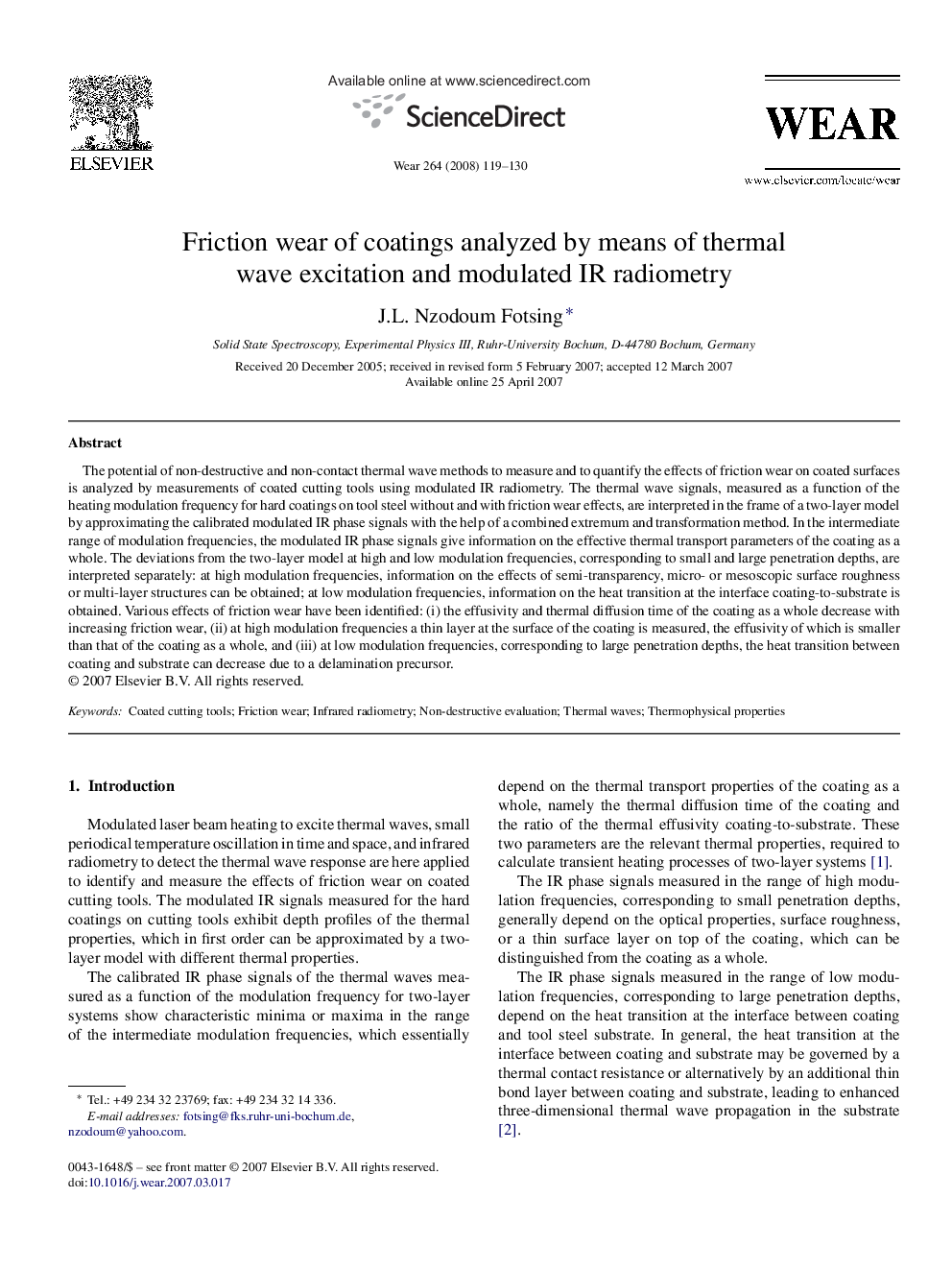| Article ID | Journal | Published Year | Pages | File Type |
|---|---|---|---|---|
| 619471 | Wear | 2008 | 12 Pages |
The potential of non-destructive and non-contact thermal wave methods to measure and to quantify the effects of friction wear on coated surfaces is analyzed by measurements of coated cutting tools using modulated IR radiometry. The thermal wave signals, measured as a function of the heating modulation frequency for hard coatings on tool steel without and with friction wear effects, are interpreted in the frame of a two-layer model by approximating the calibrated modulated IR phase signals with the help of a combined extremum and transformation method. In the intermediate range of modulation frequencies, the modulated IR phase signals give information on the effective thermal transport parameters of the coating as a whole. The deviations from the two-layer model at high and low modulation frequencies, corresponding to small and large penetration depths, are interpreted separately: at high modulation frequencies, information on the effects of semi-transparency, micro- or mesoscopic surface roughness or multi-layer structures can be obtained; at low modulation frequencies, information on the heat transition at the interface coating-to-substrate is obtained. Various effects of friction wear have been identified: (i) the effusivity and thermal diffusion time of the coating as a whole decrease with increasing friction wear, (ii) at high modulation frequencies a thin layer at the surface of the coating is measured, the effusivity of which is smaller than that of the coating as a whole, and (iii) at low modulation frequencies, corresponding to large penetration depths, the heat transition between coating and substrate can decrease due to a delamination precursor.
